#cult of antinous
Text
"Kemetic How-to Guide: Who Was Antinous?"
youtube
He was prayed for dead children too ?! Hazel-nuts as offerings, why not? Interesting!
#antinous worship#modern antinous#antinous the lover#antinous the liberator#antinous#cult of antinous#the bithynian boy#Youtube#studyblr#study#history#ancient rome#ancient egypt#ancient greece#deification#demi god#antinous daimon#daimon#agathos daimon#greek polytheism#hellenic polytheism#polytheism#greek paganism#paganism#pagan#neopaganism#neopagan#lgbtqia#gay#queer
20 notes
·
View notes
Text
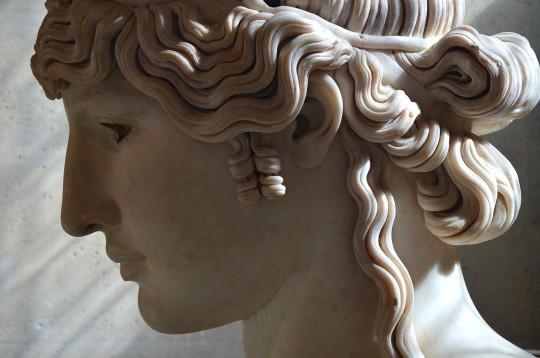
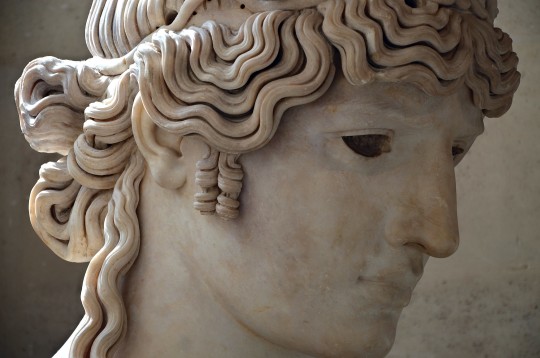
Antinous Mondragone details by Carol Raddato (Flickr)
#antinous mondragone#sculpture#art#upl#whoever made this did it chisel in one hand dick in the other...bro's beautiful...#like sorry but buccal fat removal? those full cheeks inspired cults they got him deified and rendered him beloved for thousands of years#AND he pulled a crazy amount of emperor dick. perspective people
187 notes
·
View notes
Text
adding onto what i& just said earlier, what's even worse was that whenever i& mentioned Anything to do w/ my& heritage or even as simple as saying "oh i have a dreamcatcher in my room!!!!" she would immediately say that they were demonic, just like any other religion that isnt christianity is demonic, she literally told me& that the demons she mentioned she saw must've came from that dreamcatcher. that is literal fucking textbook antinative racism.
2 notes
·
View notes
Text
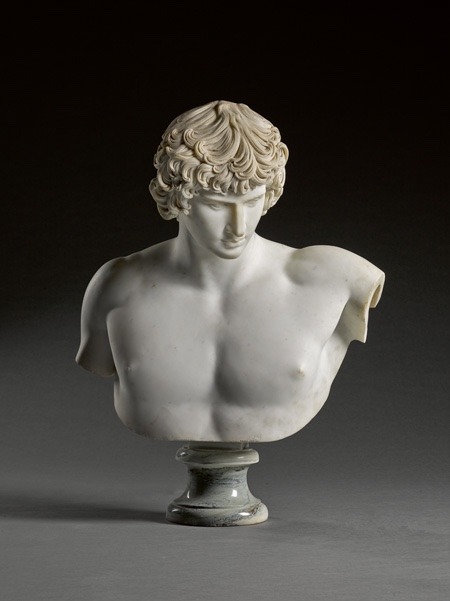

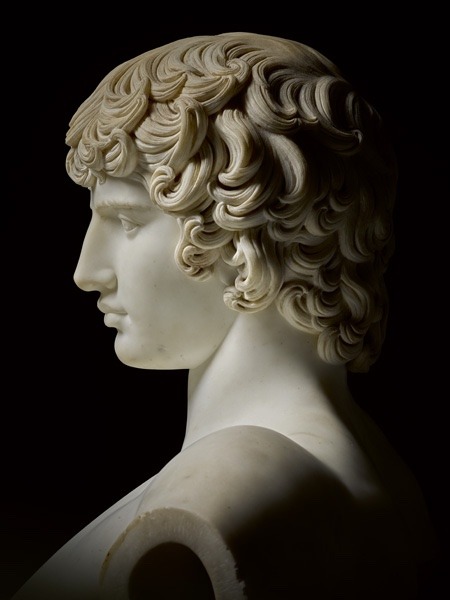

Antinous was a Greek youth from Bithynia and a favourite and lover of the Roman emperor Hadrian. After his death, Hadrian had Antinous deified and an enduring cult of worship solidified around him.
147 notes
·
View notes
Text




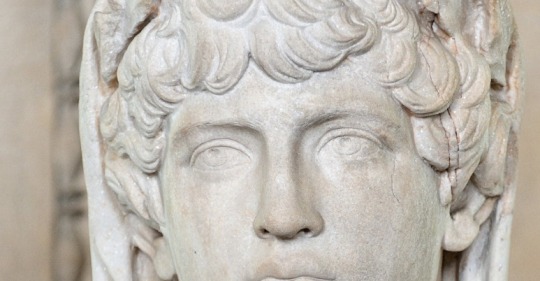





antinous (+ hadrian)
h of h, anne carson/ diaries, franz kafka/ a primer for the small weird loves, richard siken/ the death of antinoüs, mark doty/ antinous as a priest of the imperial cult/ no id/ war of the foxes, richard siken/ on earth we’re briefly gorgeous, ocean voung/ boot theory, richard siken/ antinous mondragone
485 notes
·
View notes
Text
The cult of antinous-osiris is the backwards ripple of the psychic impact of the term "twinkdeath" on the human psyche
31 notes
·
View notes
Text

the full catalogue.
ecrit par mdg.
literary-fiction
fan-fiction
non-fiction
below the cut are all my works catalogued according to the above sections. quotes are also mine.
for works catalogued by month, click here
[🏎️] marked works are for pieces pertaining to current day formula 1
requests: currently open!
‘it’s literary because i say so / it’s original because you did so.’


poems
still i write them. still i bring them into existence.
how do i begin to explain
16.3
dearest
as i am now, with you
excerpts from my diary (ft. my notes app)
march 1
march 12
notes app excerpt #053
an ode to my fallen comrade, my laptop
may3rd.
getting yourself out of a rut
chaptered works
pieces./ part one | part two | part three | part four | part five
‘fanfiction is the self-indulgent reclaimation of art.’


imagines (AKA those dot point blurbs)
cutting petunias | gojo satoru / jjk
one-shots
[🏎️] antinal | cs55
[🏎️] stomaching you | mv33
multi-chaptered fics
[🏎️] pancakes
‘a writer disconnected from the world /
may only find themselves /
by writing into it.’


F1 pieces
[🏎️] the cult side of f1
[🏎️] the growing cracks of formula one
[🏎️] why daniel ricciardo really, really needs to well in australia
[🏎️] thoughts had while marshalling a grand prix
film/music
after life / ricky gervais (2019)
personal essays
on mixtapes
the artist's (read: writer's) way [series] - coming soon!
an open letter in defence of creative pursuit
an open letter in celebration of creative pursuit
some thoughts on kendrick lamar's recent disses
#saintescuderia#writer#writers on tumblr#writer stuff#writing#writeblr#writers and poets#female writers#writerscommunity#creative writing#the tortured poets department#f1#f1 x reader#f1 meme#f1 fanfic#f1 imagine#f1 x you#f1 fic#formula 1#f1 memes#masterlist#masterpost#writer's life#writing list#fanfiction writing#fanfic writing#on writing#literary fiction#literary magazine#literature
30 notes
·
View notes
Text

Roman Over Life-Size Statue of Antinous, Companion of Emperor Hadrian, as a Hunter
130-138 AD
Nude but for the paludamentun (cloak) over his left shoulder and arm, clasped on his right shoulder. He has the characteristic muscular development of Antinous, his boyish face, and mass of curls bound with a diadem.
Limestone.
H. 152 x w. 51 x d. 31.5 cm.
Antinous, also called Antinoös, (c. 111 – c. 130) was a Greek youth from Bithynia and a favourite and lover of the Roman emperor Hadrian. Following his premature death before his twentieth birthday, Antinous was deified on Hadrian's orders, being worshipped in both the Greek East and Latin West, sometimes as a god (θεός, theós) and sometimes merely as a hero (ἥρως, hḗrōs).
Little is known of Antinous's life, although it is known that he was born in Claudiopolis (present day Bolu, Turkey), in the Roman province of Bithynia et Pontus. He was probably introduced to Hadrian in 123, before being taken to Italy for a higher education. He had become the favourite of Hadrian by 128, when he was taken on a tour of the Roman Empire as part of Hadrian's personal retinue. Antinous accompanied Hadrian during his attendance of the annual Eleusinian Mysteries in Athens, and was with him when he killed the Marousian lion in Libya, an event highly publicised by the Emperor. In October 130, as they were part of a flotilla going along the Nile, Antinous died amid mysterious circumstances. Various suggestions have been put forward for how he died, ranging from an accidental drowning to an intentional human sacrifice or suicide.
Following his death, Hadrian deified Antinous and founded an organised cult devoted to his worship that spread throughout the Empire. Hadrian founded the city of Antinoöpolis close to Antinous's place of death, which became a cultic centre for the worship of Osiris-Antinous. Hadrian also founded games in commemoration of Antinous to take place in both Antinoöpolis and Athens, with Antinous becoming a symbol of Hadrian's dreams of pan-Hellenism. The worship of Antinous proved to be one of the most enduring and popular of cults of deified humans in the Roman empire, and events continued to be founded in his honour long after Hadrian's death.
#Emperor Hadriian#Roman Over Life-Size Statue of Antinous#limestone#limestone statue#ancient artifacts#archaeology#archeolgst#history#history news#ancient history#ancient culture#ancient civilizations#ancient rome#roman history#roman empire#roman art
95 notes
·
View notes
Text
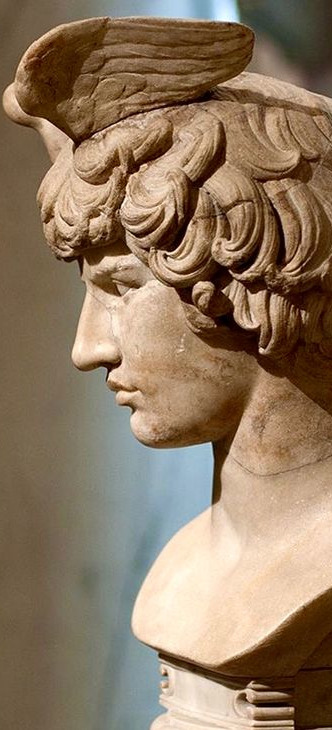
Antinous, a young man from Bithynia in Asia minor, was a favorite of the Roman emperor Hadrian. Not much is known about his life except that he possessed a rare beauty. Antinous was not yet 20 years old when he drowned in the Nile in 130 CE under suspicious circumstances. Hadrian grieved the young man and made a cult in his honor.
27 notes
·
View notes
Photo

Intaglio with Bust of Antinous, A.D. 131–138
This gem depicts Antinous, the young companion and lover of Emperor Hadrian (AD 117-138), who drowned in the River Nile during their visit to Egypt in AD 130. The grief-stricken emperor instituted a cult in honor of the youth, who was revered as a semi-divine hero.
Artist/Maker: Unknown
Culture: Roman
Place: Italy; or Greece (Place Created)
Date: A.D. 131–138
Medium: Intaglio: Black chalcedony; modern mount: gold
Object Number: 2019.13.17
Dimensions: 3.5 × 2.9 cm (1 3/8 × 1 1/8 in.)
Inscription(s): Inscribed, in Greek: ΑΝΤΟ
Alternate Title: Antinous (Display Title)
Department: Antiquities
Classification: Jewelry
Object Type: Gem
The J. Paul Getty Museum, Villa Collection, Malibu, California
Antinous is shown here in profil facing to the left; a fibula pins his chlamys in place at his left shoulder. Over his right shoulder, he carries a hunting spear. Behind his left shoulder is a fragmentary vertical inscription written in retrograde Greek letters, beginning ΑΝΤΟ…, perhaps the name of the gem engraver. The intaglio is fragmentary
21 notes
·
View notes
Text
TYPES OF DEITIES

GREEK, ROMAN, AND SOME CELTIC DEITIES:
• Aphrodite: Goddess of love.
• Ares: God of war.
• Artemis: Goddess of the hunt, the wilderness, wild animals, nature, vegetation, childbirth, care of children, and chastity.
• Athena: the warrior Goddess.
• Adonis: a God associated with the cycle of life, death and rebirth; beautiful lover of Venus who dies but is reborn every spring.
• Aesculapius: God of healing.
• Anna Perenna: personification of the year (annus), whose festival on 15 March involved drinking and singing of licentious songs by women.
• Annona: numen / spirit / personification of the food supply.
• Antinous: deified 19 year old (probable) lover of Hadrian; associated with young, masculine beauty, love and homosexuality.
• Apollo: God of light and the sun, healing (and disease), music (especially stringed instruments), poetry, archery and prophecy.
• Attis: Cybele’s consort.
• Aurora: Goddess of dawn.
• Bacchus: God of the vine, grapes, fruitfulness, vegetation, wine, ecstasy and madness.
• Bellona: Goddess of war and belligerence.
• Bona Dea (also Damia): the “good Goddess”; fertility Goddess mostly worshipped by women; see also Fauna.
• Camenae: healing Goddesses identified with the Greek Muses, thus music.
• Cardea: Goddess of door hinges and handles.
• Castor and Pollux: Gods of camaraderie and strong friendship; associated with sailors and men of the cavalry who travel far and wide.
• Ceres: Goddess of agriculture, plant growth and crop fertility.
• Clementia: Goddess of mercy and clemency.
• Concordia: Goddess of Concord.
• Consus: God of the granary/grain storage.
• Cupid: God of love and desire.
• Cybele: see Magna Mater.
• Dea Dia: agricultural Goddess of growth.
• Demeter: Goddess of harvest and agriculture.
• Diana: chaste Goddess of the hunt, animals (esp. wild), woodlands, childbirth, light and the moon.
• Dii Familares: collective term for all household Gods; guardians of home and family; includes the Lares, the Penates, Janus, Vesta, etc.
• Dionsus: God of wine and pleasure.
• Dis Pater (also Orcus or Pluto): God of the Underworld and mineral wealth.
• Discordia: Goddess of discord and strife.
• Dius Fidius: God of oaths; though Jupiter is also strongly associated with oaths.
• Dryad: general term borrowed from Hellenism denoting a tree Deity.
• Egeria: protectress of pregnant women and childbirth; a water spirit worshipped in connection with Diana and the Camenae.
• Epona: Celtic Goddess of horse riding whose cult was adopted by the Roman cavalry and spread throughout much of Europe.
• Eros: God of passion and lust.
• Fama: numen / spirit /personification of rumour, fame and infamy.
• Fauna: Goddess of the fertility of woodlands, fields, and flocks; counterpart to Faunus; possibly another name for Bona Dea.
• Faunus: God of the earth who brings fertility to fields and flocks; associated with sexuality and pleasure.
• Fides: numen/spirit/personification of good faith, trust and honesty.
• Flora: Goddess of flowering plants; associated with spring, fertility and sexual licentiousness.
• Forculus: God of doors.
• Fortuna: Goddess of increasing prosperity, good fortune, ill fortune, chance and luck.
• Gaia: the Earth Mother.
• Genius: protecting male spirit; the feminine counterpart is a “juno”.
• Graces: Goddesses of charm, grace and beauty; hence associated with Venus.
• Hades: Ruler of the Underworld.
• Hecate / Hekate: Goddess of magic, witchcraft, and sorcery.
• Hebe: Goddess of youth or of the prime of life.
• Hestia: Goddess of the hearth, home, and hospitality.
• Hera: Goddess of marriage.
• Hestia: guardian of hearth and home.
• Hercules: God of heroism, strength and perseverance.
• Honos: numen/spirit/personification of honour and virtus.
• Janus: God of beginnings, transitions, openings, closings and entrance-ways.
• Juno: Goddess of women, marriage and motherhood.
• Jupiter: protecting God of the sky and weather, especially thunder, lightning, rain and storms; also associated with the swearing of oaths.
• Juturna: Goddess of fountains.
• Juventas: Goddess of youth.
• Lar (Plural Lares): protecting spirit/s of the household.
• Larvae (also Lemures): malevolent spirits of the dead.
• Latona: mother of Apollo and Diana (twin deities of light).
• Liber: see Bacchus.
• Libera: consort of Liber / Bachhus; identified with the Greek Ariadne.
• Libertas: numen/spirit/personification of liberty and personal freedom.
• Libitina: Goddess of the dead, funerals and burial.
• Limentinus: God of the threshold.
• Lucifer: the Morning Star; literally “bringer of light”.
• Luna: Goddess of the moon, may be considered an aspect of Diana.
• Lymphae: general term for Deities of springs, streams and similar water divinities; similar to Greek Naiads.
• Magna Mater: Phrygian earth Goddess of nature; great mother of all.
• Manes: spirits of the dead, generally friendly.
• Maia: Goddess of nursing mothers.
• Mars: God of violence, war, valour and virility.
• Matuta: Goddess worshipped mostly by young women; associated with growth, Aurora and the Greek Leucothea.
• Mercury: God of financial gain, trade, travel, writing, language, communication, cunning, trickery and psychopomp.
• Minerva: Goddess of skilled thought leading to skilled action, thus wisdom, workmanship and strategy.
• Miseria: numen / spirit / personification of misery and wretchedness, Cicero refers to her as kin to other spirits of unhappiness, including Dolus (deceit), Metus (anxiety), Invidentia (envy), Mors (death), Tenebrae (darkness), Querella (lamentation), Fraus (fraud / delusion) and Pertinacia (obstinacy). We may add to this list Melancholia (alternately, Melancholica); note that mania and psychosis almost certainly belong to the domain of Bacchus. See also Discordia.
• Mithras: Persian God of light.
• Nemesis: Goddess of retribution.
• Neptune: God of water, the sea and horses.
• Nox: Goddess of night.
• Nundina: Goddess associated with the purification and naming of children (for girls on the 8th day; for boys on the 9th).
• Ops: Goddess of the wealth of the harvest, consort to Saturn.
• Osiris: consort to Isis.
• Ouranos (also known as Uranus): God of the sky.
• Pales: Deity of shepherds, flocks and livestock.
• Pan: the goat-legged fertility God.
• Parcae: Goddesses of childbirth and destiny (Nona, Decuma and Morta); determining the length of a person’s life and their allotment of suffering.
• Pax: Goddess of peace.
• Penates: spirits of the household provisions / food stores / pantry.
• Pluto: God of the Underworld (in Roman mythology).
• Plutus: God of abundance or wealth.
• Picus: agricultural Deity associated particularly with the fertilisation of the soil with manure; associated with Faunus.
• Pietas: personification of a respectful and faithful attachment to Gods, country and family.
• Picymnus and Pilumnus: agricultural Gods associated with childbirth.
• Pomona: Goddess of fruit.
• Portunus: God of harbours.
• Poseidon: God of the the sea (and of water generally), earthquakes, and horses.
• Priapus: God of animal and vegetable sexuality and fertility; protector of gardens, and lust.
• Prosepina (also known as Persephone): Goddess and Queen of the Underworld, wife of the God Haides (Hades). She was also the Goddess of spring growth, who was worshipped alongside her mother, Demeter, in the Eleusinian Mysteries.
• Quirinus: deified Romulus, the founder of Rome.
• Rhea: Goddess of motherhood, fertility, childbirth, and comfort and good living.
• Robigo: God of mildew and wheat rust, a fungal disease affecting grain. Robigo can therefore protect crops from wheat rust.
• Roma: numen / spirit / personification of Rome.
• Rumina: Goddess of breastmilk.
• Sabazius: Phrygian God of vegetation.
• Salus: Goddess of safety, good health and well-being.
• Serapis (also Sarapis): Greco-Egyptian God of the sky; associated with healing and fertility.
• Selene: Goddess of the Moon; or, the personified divine being of the Moon.
• Saturn: God of agricultural abundance, sowing, seeds and mythological ruler of a past golden age.
• Silvanus: God of the woods and fields.
• Somnus: God of sleep.
• Sol: God of the sun, may be considered as another name for Apollo.
• Spes: numen / spirit / personification of hope.
• Tellus: Goddess of the earth; Ovid states she is one and the same as Vesta.
• Terminus: God of property boundaries; may be associated with steadfastness.
• Trivia: (also Hekate / Hecate), Goddess of crossroads (usually three-way), ghosts, the undead and witchcraft.
• Venus: Goddess of love, relationships, passion, pleasure, beauty, charm and fertility.
• Veryumnus: God of orchards.
• Vesta: Goddess of ritual-fire, hearth-fire, and home; associated with purity and virginity.
• Victoria: Goddess of victory, especially military victory.
• Vulcan: God of destructive and fertile (creative) fire.
• Zeus: Ruler of Olympus.
PAGAN GODS AND GODDESSES:
CELTIC DEITIES:
• Brighid: Goddess of spring, fertility, and life.
• Cailleach: Goddess of the cold and the winds.
• Cernunnos: God of animals, fertility, and wild places.
• Cerridwen: Goddess of change and rebirth and transformation and her cauldron symbolizes knowledge and inspiration.
• The Dagda: God of fertility, agriculture, manliness, strength, magic, druidry, and wisdom.
• Herne: God associated with the Wild Hunt.
• Lugh: God of the sun and light.
• The Morrighan: Goddess of war and sovereignty
• Rhiannon: Goddess of horses, forgiveness, rebirth, the moon, and fertility.
• Taliesin: Chief of Bards.
EGYPTIAN DEITIES:
• Anubis: God of funerals and embalming.
• Bast (also Bastet): Goddess of protection, pleasure, and the bringer of good health.
• Geb: God of Earth
• Hathor: Goddess of love, beauty, music, dancing, fertility, and pleasure.
• Isis: Goddess of healing and magic, worshipped as an ideal mother and wife, as well as being a patroness of magic and the downtrodden.
• Ma’at: Goddess of truth and balance.
• Osiris: King of Egyptian Gods.
• Ra: God of the sun, order, kings, and the sky.
• Taweret: Guardian of fertility.
• Thoth: God of magic and wisdom.
NORSE DEITIES:
• Aegir: hosts the Gods in his halls and is associated with brewing ale.
• Baldur: God of light and radiance, joy and purity, peace and forgiveness.
• Baldur: God of light and radiance, joy and purity, peace and forgiveness.
• Bragi: God of poetry.
• Heimdall: Protector of Asgard.
• Frigga: Goddess of marriage and prophecy.
• Freyr: God of fertility, peace, and good weather.
• Freya/Freyja: Goddess of abundance, love, beauty, fertility, sex, war, gold, and seiðr (magic for seeing and influencing the future).
• Hel: Goddess of death and the Underworld.
• Hodur: God of winter and darkness.
• Idun: Goddess of youth, fertility, and death.
• Loki: God of mischief, trickery, and deception.
• Njǫrd: God of the wind and of the sea and its riches.
• Odin: God of all Gods, wisdom, and war.
• Sif: Goddess of grain and fertility, and one of the Asynjur.
• Thor: God of thunder and lightning.
• Tyr: God of warfare and battle.
• Váli: one of the God’s on vengeance.
THE DIFFERENT TYPES OF PAGAN DEITIES:
DEITIES OF LOVE AND MARRIAGE:
• Aphrodite (Greek)
• Cupid (Roman)
• Eros (Greek)
• Frigga (Norse)
• Hathor (Egyptian)
• Hera (Greek)
• Juno (Roman)
• Parvati (Hindu)
• Venus (Roman)
• Vesta (Roman)
DEITIES OF HEALING:
• Asclepius (Greek)
• Airmed (Celtic)
• Aja (Yoruba)
• Apollo (Greek)
• Artemis (Greek)
• Babalu Aye (Yoruba)
• Bona Dea (Roman)
• Brighid (Celtic)
• Eir (Norse)
• Febris (Roman)
• Heka (Egyptian)
• Hygieia (Greek)
• Isis (Egyptian)
• Maponus (Celtic)
• Panacaea (Greek)
• Sirona (Celtic)
• Vejovis (Roman)
LUNAR DEITIES:
• Alignak (Inuit)
• Artemis (Greek)
• Cerridween (Celtic)
• Chang’e (Chinese)
• Coyolxauhqui (Aztec)
• Diana (Roman)
• Hecate/Hekate (Greek)
• Selene (Greek)
• Sina (Polynesian)
• Thoth (Egyptian)
DEITIES OF DEATH AND THE UNDERWORLD:
• Anubis (Egyptian)
• Demeter (Greek)
• Freya/Freyja (Norse)
• Hades (Greek)
• Hecate/Hekate (Greek)
• Hel (Norse)
• Meng Po (Chinese)
• Morringhan (Celtic)
• Osiris (Egyptian)
• The Keres (Greek)
• Whiro (Maori)
• Yama (Hindu)
DEITIES OF THE WINTER SOLSTICE:
• Alcyone (Greek)
• Ameratasu (Japan)
• Baldur (Norse)
• Bona Dea (Roman)
• Cailleach Bheur (Celtic)
• Demeter (Greek)
• Dionysus (Greek)
• Frau Holle (Norse)
• Frigga (Norse)
• Hodr (Norse)
• Holly King (British/Celtic)
• Horus (Egyptian)
• La Befana (Italian)
• Lord of Misrule (British)
• Mithras (Roman)
• Odin (Norse)
• Saturn (Roman)
• Spider Woman (Hopi)
DEITIES OF IMBOLC:
• Aradia (Italian)
• Aenghus Og (Celtic)
• Aphrodite (Greek)
• Bast (Egyptian)
• Ceres (Roman)
• Cerridwen (Celtic)
• Eros (Greek)
• Faunus (Roman)
• Gaia (Greek)
• Hestia (Greek)
• Pan (Greek)
• Venus (Roman)
• Vesta (Roman)
DEITIES OF SPRING:
• Asase Yaa (Ashanti)
• Cybele (Roman)
• Eostre (Western Germanic)
• Freya/Freyja (Norse)
• Osiris (Egyptian)
• Saraswati (Hindu)
FERTILITY DEITIES:
• Artemis (Greek)
• Bes (Egyptian)
• Bacchus (Roman)
• Cernunnos (Celtic)
• Hera (Greek)
• Kokopelli (Hopi)
• Mbaba Mwana Waresa (Zulu)
• Pan (Greek)
• Priapus (Greek)
• Sheela-na-Gig (Celtic)
• Xochiquetzal (Aztec)
DEITIES OF THE SUMMER SOLSTICE:
• Amaterasu (Shinto)
• Aten (Egypt)
• Apollo (Greek)
• Hestia (Greek)
• Horus (Egyptian)
• Huitzilopochtli (Aztec)
• Juno (Roman)
• Lugh (Celtic)
• Sulis Minerva (Celtic and Roman)
• Sunna or Sol (Germanic)
DEITIES OF THE FIELDS:
• Adonis (Assyrian)
• Attis (Phrygean)
• Ceres (Roman)
• Dagon (Semitic)
• Demeter (Greek)
• Lugh (Celtic)
• Mercury (Roman)
• Osiris (Egyptian)
• Parvati (Hindu)
• Pomona (Roman)
• Tammuz (Sumerian)
DEITIES OF THE HUNT:
• Artemis (Greek)
• Cernunnos (Celtic)
• Diana (Roman)
• Herne (British and Regional)
• Mixcoatl (Aztec)
• Odin (Norse)
• Ogun (Yoruba)
• Orion (Greek)
• Pakhet (Egyptian)
DEITIES OF WAR AND BATTLE:
• Ares (Greek)
• Athena (Greek)
• Bast (Egyptian)
• Huitzilopochtli (Aztec)
• Mars (Roman)
• The Morrighan (Celtic)
• Thor (Norse)
• Tyr (Norse)
MOTHER GODDESSES:
• Asasa Ya (Ashanti)
• Bast (Egyptian)
• Bona Dea (Roman)
• Brighid (Celtic)
• Cybele (Roman)
• Demeter (Greek)
• Freya/Freyja (Norse)
• Frigga (Norse)
• Gaia (Greek)
• Isis (Egyptian)
• Juno (Roman)
• Yemaya (West African/Yoruban)
#fyp#fypシ#fypシ゚viral#fypage#fyppage#tumblr fyp#satanism#satanist#deity#deity work#deity worship#occult#norse mythology#greek mythology#roman mythology#celtic mythology#egyptian mythology#aztec mythology#germanic mythology#hindu mythology#goddess#gods#information
9 notes
·
View notes
Text

Medallion of Antinous, favorite of Hadrian. Struck in 134 at Mantineia, Arcadia.
These medallions were commissioned by a man named Vetourios and probably struck for some games that were held at the city of Mantineia that were dedicated to Antinous due to the city's participation in his cult.
The cult of Antinous was created after his death and spread by Hadrian.
10 notes
·
View notes
Text

The Love Between Emperor Hadrian and Antinous
A Romantic Connection in Antiquity and its Modern Significance
The story of Hadrian and Antinous, viewed through the prism of the modern world, impressively illustrates how love and relationships can transcend the societal norms of their time and can be celebrated in every era. Their relationship, captured in art and literature as a symbol of true love and devotion, connects the ancient world with our present. It shows that love, devotion, and human emotions are timeless and universal, elements that exist independently of time and space.
Within the rich history of the Roman emperors, often marked by power plays and political strategies, one relationship stands out in particular: that between Emperor Hadrian and Antinous. This connection, which blossomed in the 2nd century AD, was markedly different from the political alliances of the time and is today considered one of the most profound and significant romantic relationships of antiquity.
Hadrian, known as one of the most prominent Roman emperors, ruled from 117 to 138 AD and maintained during his reign a close and possibly romantic relationship with Antinous, a young Greek of extraordinary beauty. Antinous, who entered the life of the emperor, quickly became a central figure at the imperial court and accompanied Hadrian on numerous journeys. Their relationship, immortalized in many sculptures and artworks, attests to Hadrian's admiration and veneration for Antinous's beauty and grace.
The sudden end of this relationship came with the tragic death of Antinous in 130 AD, the circumstances of which remain mysterious to this day. Some historians suspect an accident, while others speculate about a possible suicide out of devotion to Hadrian. The death of Antinous left the emperor in deep mourning, which was expressed in the construction of temples and cults in honor of Antinous in various parts of the empire.
Text supported by Chat GPT-4
Base Image generated with DALL-E, overworked with SD-1.5 inpainting and composing.
#HadrianAndAntinous#AncientLove#RomanHistory#TimelessRomance#AntiquityInArt#EmperorHadrian#AntinousBeauty#Romance#CulturalHeritage#gayart#LGBT#gaylove#queer#loveislove#manlovesman
11 notes
·
View notes
Text

The second of the four designs for my 2022 Pride line: a portrait of Holy Antinoos, the deified lover of the Roman Emperor Hadrian. More myth than fact remains of either his life or his death, but the record is clear that he died while travelling with Hadrian in Egypt and that emperor had him deified, established a hero cult in his name, and named a city after him. The cult never became a major religion, but it was widespread and reasonably popular, and Antinoos became both a religious and literary icon of sexual love between men. I based this image of Antinoos on a Roman statue in the Antinous Mondragone style from the 2nd century CE, reframed in imitation of an ancient coin.
* Made of solid .925 sterling silver or shibuichi (an art metal alloy made of 3:1 copper:silver), yellow brass, or bronze.
* Available as a coin, with an upeye for use as a pendant, or with three jump rings for use in a rosary-style necklace.
Each piece is hand-made to order in my home studio, with unique variations and defects as a result of the fabrication and casting process.
#Antinoos#Pride Jewelry#Jewelry Art#Jewelry#Art Jewelry#Queer Artist#Queer Jeweler#LGBT#Sorcerers Workbench
6 notes
·
View notes
Text
THIS DAY IN GAY HISTORY
based on: The White Crane Institute's 'Gay Wisdom', Gay Birthdays, Gay For Today, Famous GLBT, glbt-Gay Encylopedia, Today in Gay History, Wikipedia, and more … November 27


c. 111 A.D – Antinous born (d.130 A.D.); If there was an All Time Beautiful Men contest, this man would have been a contender if he didn't just walk away with the cup. And like most beauties, be married well.
Antinous was a famous beauty of the ancient world who became the beloved of the emperor Hadrian. He may have been a male prostitute when Hadrian met him, but his origins are obscure. All that is known is that Hadrian was immediately and utterly smitten with the beautiful 15-year-old. From that time on, Antinous was with the emperor constantly until a journey to Egypt where he was drowned in the Nile. Some say that Antinous, knowing that a prophecy had declared the death of Hadrian unless a living sacrifice were to be offered in his place, died so that his lover might live. Others believe that Antinous, growing into young manhood, was ashamed of playing mistress to the emperor.
The most poignant story is that the boy killed himself because he couldn't bear the idea of growing old. What we know for certain is that Hadrian's grief at the death of Antinous was uncontained and nothing short of monumental. He deified him and founded the city of Antinopolis in Egypt in his honor (and many other Antinopolises elsewhere in the Roman world) and renamed the boy's birthplace Antinopolis as well. A cult was inaugurated in his honor. Coins were minted with his likeness and numerous busts and shatteringly beautiful statues were erected to commemorate the beauty of this youth and the love the emperor felt for him.
After deification, Antinous was associated with and depicted as the Egyptian god Osiris, associated with the rebirth of the Nile. Antinous was also often depicted as the Roman Bacchus, a god related to fertility. Antinous is one of the best-preserved faces from the ancient world. Many busts, gems and coins represent Antinous as the ideal type of youthful beauty.


1883 – The English Uranian poet Edmund John was born on this date (d.1917). Poet John came of age in the decade after the trial of Oscar Wilde and illustrates the fact that far from disappearing off the face of the globe, homosexuality simply retreated a bit further underground. A letter to one of John's young friends provides us with a very good idea of the "tone" of Gay life in Edwardian England:
"I have received your adorable illustrated letter this morning and loved it so much I immediately made an altar before it, lit by amber candles in copper candlsticks, burnt incense before it and kissed its extreme beautifulness."
Much of his work was condemned by critics for being overly decadent and unfashionable. He fought in the First World War, but was invalided out in 1916 and died at Taormina, in Sicily, a year later. His books include The Flute of Sardonyx: Poems (1913), The Wind in the Temple: Poems (1915), and Symphonie Symbolique (1919).
Following what was almost a fashion in the first two decades of the century, the objects of the emotion in many of the poems are young boys but, unlike most of the 'Uranian' poets, John's sincerity gives the poems a white-hot purity.


1922 – Born: James Lord (d.2009), expatriate British writer in France, Giacometti scholar and art historian.
Lord was born to Albert Lord, a New York stock broker and Louise Bennett . He attended Wesleyan University, but a self-admitted poor student, he enlisted in the United States army after the attack on Pearl Harbor in 1941. His facility with French qualified him for Military Intelligence Service after the invasion of Normandy; he was stationed in France.
While there, Lord searched out Pablo Picasso in 1944 locating him in his studio on the Rue des Grands-Augustins. Following the war, Lord left Wesleyan without graduating, returning to Paris in 1947, perhaps because his homosexuality might be better accepted there.
Despite his sexual proclivities, he entered into an affair with Picasso's mistress, Dora Maar after she and the artist were split.
He kept meticulous journals of the conversations that he had with nearly all the litterati of post-war Paris. His intention was to become a writer, but excessive socializing kept him from production.
Lord met the Swiss sculptor Alberto Giacometti in 1952 at the Café aux Deux Magots, and frequently visited his studio in Montparnasse. The two remained friends throughout the artist's life.
After two unsuccessful novels, Lord was asked to write a book on Giacometti by the Museum of Modern Art to accompany the 1965 retrospective exhibition on the artist.
A Giacometti Portrait was hailed a success and is today valued as a source for information and insight on the artist. In 1970 Lord began a full-length treatment of the scultpor, completed only in 1985 and published as Giacometti: A Biography. The book's frank description of Giacometti's sadistic tendencies and mental problems drew the ire of many of the sculptor's friends, who signed a public protest letter against the book.
Lord set out to write a series of memoirs based upon personalisties. Picasso and Dora: A Personal Memoir appeared in 1993 followed by Six Exceptional Women the following year and Some Remarkable Men in 1996. A Gift for Admiration was published in 1998.
He adopted his life-companion, Gilles Foy-Lord, officially as his son. While working on a book of his experiences as a gay man in the army, My Queer War, he suffered a heart attack at his home in Paris and died at age 86.

Lord's style is that of a raconteur and witness to the event itself. All of his writing weaves autobiography, reportage, and gossip. HIs portraits of his experiences with Gertrude Stein, Jean Cocteau, Balthus, Peggy Guggenheim and the art historian Douglas Cooper provide rich documentary evidence on these personalities.


1964 – Adam Shankman is an American film director, producer, dancer, actor, and choreographer. He has been a judge on the television program So You Think You Can Dance since Season 3. He began his professional career in musical theater, and was a dancer in music videos for Paula Abdul and Janet Jackson. Shankman has choreographed numerous films as well as one of the Spice Girls' tours. He has directed several feature-length films, including A Walk to Remember, Bringing Down the House, and the 2007 remake of Hairspray. Shankman is openly gay.
Shankman was born in Los Angeles, California to an upper middle class family. He has said that he had a "traditional Jewish upbringing" in Brentwood. He attended The Juilliard School, but dropped out to dance in musical theater.
Prior to directing Hairspray, Shankman was known in Hollywood primarily as a script doctor. His trademarks in his films often features a singing/dancing sequence and a character getting sent to do community service. "I've done so many things I'm not super-proud of," he admitted in an interview with the Los Angeles Times. In August 2008, Box office Mojo reported that Hairspray had become the fourth-largest grossing American movie musical within the previous 30 years. He has also directed the 2012 film adaptation of the Broadway musical Rock of Ages for New Line Cinema. Shankman has also directed and choreographed multiple episodes of Fox's Glee.


1967 – On this date Craig Rodwell opened Oscar Wilde Bookshop, the world's first Gay and Lesbian bookstore, in Greenwich Village, New York City. The small bookstore remained open over 40 years until it closed in 2009.

1700 – A new law concerning sodomy was passed by the Pennsylvania assembly. If committed by a white man, sodomy was punishable by life in prison and, at the discretion of the judge, a whipping every three months for the first year. If married, the man was castrated and his wife was granted a divorce. If committed by a black man, the punishment for sodomy was death.

1998 – Former Zimbabwean President Canaan Banana was convicted of eleven counts of sodomy and indecent assault.


8 notes
·
View notes
Text


the thirty (one) days of march
the 2024 challenge of writing - and posting - everyday for the month of march
march 1 / how to become a writer
march 2 / things i learned from ricky gervais' 'after life'
march 3 / an ode to a fallen comrade, my laptop
march 4 / on mixtapes
march 5 / the cult side of f1
march 6 / still i bring them into existence. still i create them
march 7 / a fic to cope with jeddah (aka: antinal)
march 8 / the writer's way (pt. 1)
march 9 / the growing cracks of formula 1
march 10 / an open letter in defence of creative pursuit
march 11 / an open letter to thank those who championed me
march 12 / today was a day
march 13 / notes app entry #053
march 14 / how do i begin to explain
march 15 / the confusing aftermath of being forgiven
march 16 / march 16
march 17 / the writer's way (pt. 2)
march 18 / why daniel ricciardo really, really needs to do well in australia
march 19 / pancakes p1 (it happened lol)
march 20 / dearest
march 21 / as i am, with you
march 22 / skyline
march 23 / thoughts had while marshalling a grand prix
march 24 / thoughts had while marshalling a grand prix (cont.)
march 25 / pancakes p2
march 26 / BLOCKED.
march 27 / BLOCKED.
march 28 / BLOCKED.
march 29 / overcoming writer's block
#saintescuderia#the artists way#the writers way#poet#poetry#poem#poems and quotes#writer#writing#writeblr#writers and poets#writerscommunity#writers on tumblr#writer stuff#poems on tumblr#poems and poetry#original poem#words words words#poetic#love poem#creative writing#creative habits#on writing#poesia#poets on tumblr#literature#f1#literary#fanfiction#y/n
7 notes
·
View notes